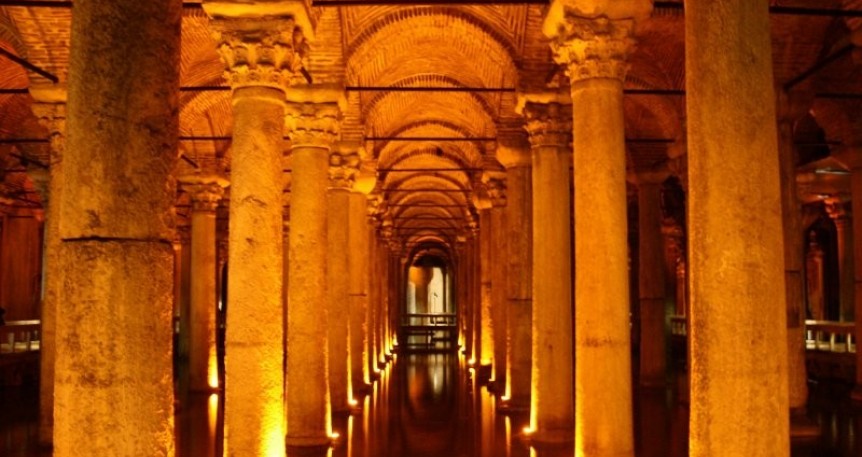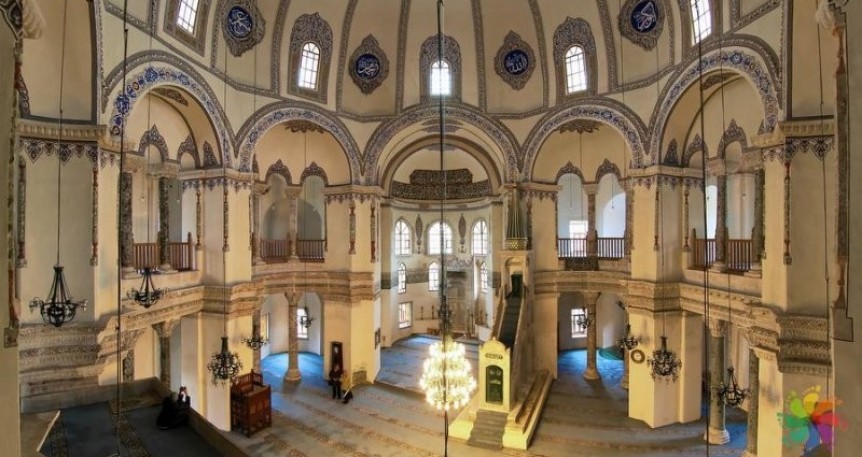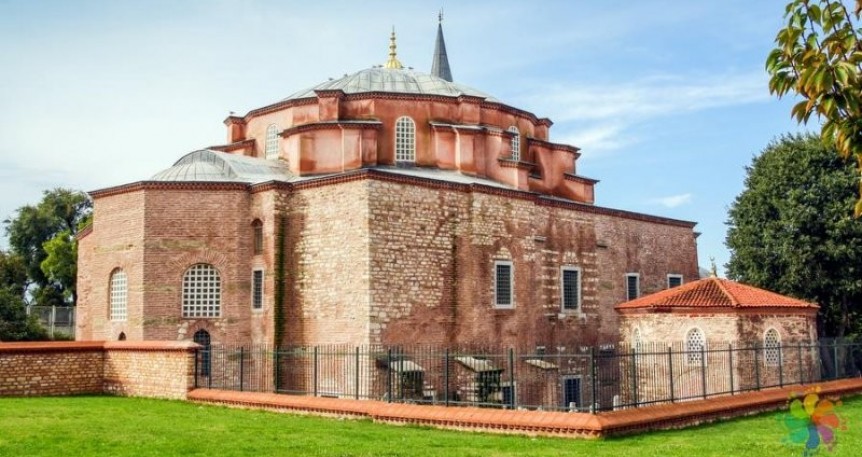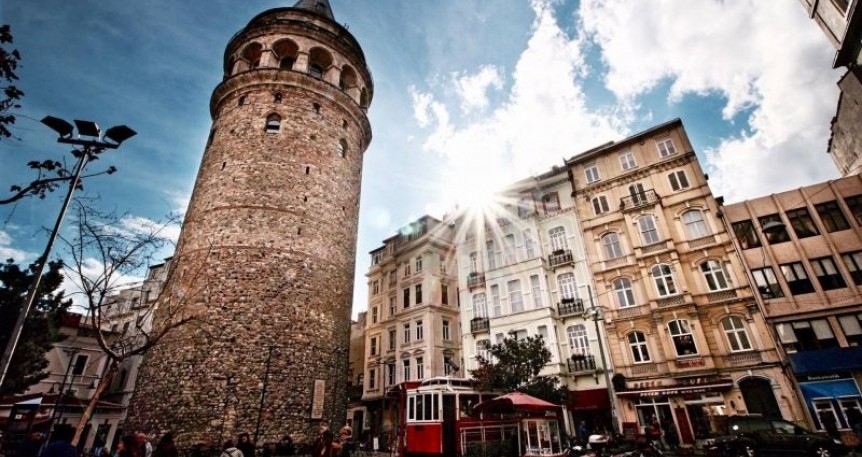Galata Tower
The Galata Tower, Galata Kulesi in Turkish, is one of the highest and oldest towers of Istanbul. 63 meter (206 feet) high tower provides a panoramic view of the old town. It was built in the 14th century by the Genoese colony as part of the defense wall surrounding their district at Galata directly opposite ancient Constantinopolis. They called the tower as "Christea Turris", or "Tower of Christ". The Genoese were involved in trade with the Byzantines and the tower was used for the surveillance of the Harbor in the Golden Horn. After the conquest of Constantinople by Mehmet II, it served to detect fires in the city.
Basilica Cistern
The Basilica Cistern was given its name for the reason of being located under the Stoa Basilica. It covers an area of 140 meters long and 70 meters wide. The cistern has 336 marble columns in Ionic or Corinthian styles, which are 9 meters in length. To enter the cistern, one has to go down a 52-step staircase. Water was brought from the reservoir in E?rikap?, in the Belgrade Forest, 19 kilometers away from the city. The cistern was capable of storing 100,000 tons of water coming from the reservoir. With the 971-meter-long Bozdo?an Aqueduct and the 115.45 meter long Maglova Aqueduct, the water was transported to the city center which was built by Emperor Justinian.
The Little Hagia Sophia
The oldest surviving Byzantine monument in Istanbul, Küçük (“Little”) Hagia Sophia was constructed under the emperor Justinian near the southern city walls on the shores of the Sea of Marmara in a.d. 527–536. In 1504, the building was converted into a mosque. In the 1950s, the area in front of the city walls near the building was claimed from the sea and opened to traffic. A railway was later built next to the building. Although the sanctuary was restored in 1996, it was damaged by an earthquake in 1999, resulting in a series of cracks in the central dome that have allowed rainwater to seep in. This damage has been compounded by differential settlement, rising damp, and constant vibrations from the railway and road. Construction of a new sea wall nearby also raised the water table and affected the foundation of the mosque. Last update: December 2010
Hagia Sophia
Hagia Sophia, Turkish Ayasofya, Latin Sancta Sophia, also called Church of the Holy Wisdom or Church of the Divine Wisdom, cathedral built at Constantinople (now Istanbul, Turkey) in the 6th century ce (532–537) under the direction of the Byzantine emperor Justinian I. By general consensus, it is the most important Byzantine structure and one of the world’s great monuments.






